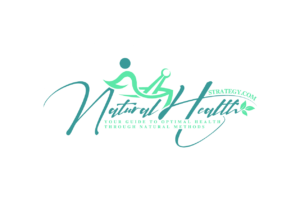Jowls can be a frustrating sign of aging, often impacting self-confidence. Many seek effective, minimally invasive solutions. So, can Botox help jowls? Botox is widely known for smoothing wrinkles, but it’s also becoming a popular option for redefining the jawline. Below, we’ll dive into how Botox works for jowls, who it’s best suited for, and what kind of results you can anticipate.
How Can Botox Help Jowls?
Botox works by relaxing specific muscles that contribute to sagging skin. When strategically injected, it can lift and tighten the jawline.
Over time, the muscles around the mouth and jaw pull downward, creating the appearance of jowls. Botox targets these muscles to reduce their activity. This can result in a smoother, more defined lower face.
Key Benefits of Botox for Jowls:
- Reduces the appearance of sagging skin.
- Provides a more defined and lifted jawline.
- Non-surgical with minimal recovery time.
- Improves overall facial symmetry.
- Customizable for each patient’s unique needs.
- Helps prevent further muscle-related sagging.
- Boosts confidence with subtle, natural-looking results.
- Pairs well with other non-invasive treatments for enhanced outcomes.
While Botox does not remove excess skin, it can complement other treatments. For mild to moderate jowls, it’s a great option to consider.
For optimal Botox results on jowls, maintain a healthy lifestyle, including stress management and regular skincare, to enhance muscle relaxation effects.
Who is a Good Candidate for Botox for Jowls?
Not everyone is an ideal candidate for Botox to treat jowls. It works best for individuals with mild to moderate sagging.
Ideal Candidates Include:
- Those experiencing early signs of jowling.
- People seeking a non-surgical treatment option.
- Individuals with strong muscle activity contributing to sagging.
- Adults in good overall health without severe skin laxity.
Who May Not Be Suitable:
- People with excessive loose skin requiring surgical intervention.
- Individuals with certain medical conditions or allergies to Botox.
- Those expecting immediate, dramatic results.
A consultation with a qualified professional is essential to determine if Botox is the right choice. They can assess your jawline and recommend the most effective treatment.
To prolong Botox effects for jowls, consider pairing it with treatments like thread lifts or ultrasound skin-tightening for enhanced results.
How Does the Botox Procedure for Jowls Work?
The Botox procedure for jowls is simple, quick, and minimally invasive, making it a popular option for busy individuals. Here’s how it typically unfolds:
Step 1: Consultation
Your provider begins by assessing your jawline and discussing your cosmetic goals. During this stage, they determine the exact injection points and whether Botox is suitable for you. They’ll also address any questions or concerns you have about the treatment.
Step 2: Preparation
Before the procedure, the treatment area is cleansed thoroughly to prevent any risk of infection. A numbing cream may be applied, especially if you’re sensitive to injections, though most people find the procedure relatively painless.
Step 3: Targeted Injections
Using a fine needle, Botox is injected into specific muscles contributing to jowl sagging. These are typically muscles that pull the jawline downward, such as the platysma. The injections are precise, ensuring the surrounding muscles are unaffected to maintain a natural look.
Step 4: Immediate Post-Treatment Care
After the injections, your provider may apply a cold compress to reduce any minor swelling or redness. You’ll be advised to avoid lying down, rubbing the treated area, or engaging in strenuous activity for at least 4–6 hours. This helps ensure Botox settles properly and delivers the best results.
What to Expect After the Procedure
Most patients return to their regular activities immediately after the treatment. While some effects, like slight redness or swelling, may occur, these typically subside within a few hours. Results start appearing within 3–5 days, with optimal results visible in 1–2 weeks.
By targeting only the necessary muscles, the procedure subtly lifts and redefines the jawline without drastic changes, ensuring a natural and youthful appearance.
Combining Botox with a well-structured skincare routine can maximize its jawline-smoothing benefits and improve overall skin health.
How Long Do Botox Results for Jowls Last?
The longevity of Botox results for jowls can vary depending on individual factors and lifestyle. On average, results last 3–6 months.
Factors That Influence Duration:
- Metabolism: People with faster metabolisms may see results fade sooner.
- Muscle Activity: Stronger or more active muscles may require more frequent treatments.
- Dosage Used: The amount of Botox injected plays a role in how long the effects last.
- Lifestyle Habits: High levels of stress, smoking, or excessive sun exposure can shorten results.
Maintenance Tips to Prolong Results:
- Schedule follow-up appointments every 3–4 months.
- Use sunscreen to protect skin and prevent further sagging.
- Avoid strenuous facial movements that can strain treated areas.
- Pair Botox with complementary treatments like fillers for enhanced results.
Consistent treatments not only maintain results but may also weaken targeted muscles over time. This can lead to longer-lasting effects with fewer sessions.
After Botox injections, optimal results appear in 1–2 weeks, offering a natural-looking lift without invasive surgery.
Are There Any Side Effects or Risks of Using Botox for Jowls?
Botox is generally safe when administered by a qualified professional. However, as with any treatment, side effects are possible.
Common Side Effects:
- Mild redness or swelling at the injection site.
- Temporary bruising.
- Slight discomfort or tenderness.
- A feeling of tightness in the treated area.
These side effects are usually minor and resolve within a few days.
Less Common Risks:
- Uneven results or asymmetry if injections are improperly placed.
- Temporary difficulty in facial expressions.
- Rare allergic reactions to Botox.
How to Minimize Risks:
- Always choose a licensed and experienced provider.
- Follow all post-treatment care instructions.
- Inform your provider of any medical conditions or medications.
Discussing potential risks during your consultation ensures you have realistic expectations and confidence in your decision.
Before your Botox session, avoid alcohol and blood-thinning medications to minimize the risk of bruising and enhance recovery.
How Does Botox Compare to Other Treatments for Jowls?
Botox is just one option for addressing jowls. Here’s how it compares to other popular treatments.
Why Choose Botox?
Botox is non-surgical, quick, and relatively affordable. It offers subtle improvements without downtime, making it ideal for those with mild sagging. Results appear in 1–2 weeks and last 3–6 months.
Its Limitations
While effective for muscle-related sagging, Botox doesn’t address loose skin or volume loss. It’s best suited for early signs of jowling.
Botox can provide subtle enhancements for mild sagging, but for advanced cases, complementary treatments like fillers may be necessary.
Other Treatment Options
- Fillers can add volume to lift sagging skin and contour the jawline.
- Thread lifts offer a minimally invasive way to physically lift the jowls.
- Energy-based treatments like ultrasound or radiofrequency tighten skin by boosting collagen.
- Facelifts provide dramatic, long-term results for severe sagging but require surgery and recovery time.
The right choice depends on your goals and the severity of your jowls. A consultation with a professional can help create a tailored plan.
Conclusion: Can Botox Help Jowls?
Can Botox help jowls? Yes, it can, especially for those with mild to moderate sagging. Botox works by relaxing targeted muscles, creating a subtle lift and a more defined jawline. While results are temporary, they’re noticeable, non-invasive, and come with minimal risks when performed by an experienced provider.
For long-term or more dramatic improvements, combining Botox with other treatments like fillers or skin-tightening procedures may be ideal. Ultimately, the best approach depends on individual needs and goals. Consulting a qualified specialist ensures you get a personalized plan that works for you.
References
- Mendez-Eastman, S. K. (2003). BOTOX: A review. Plastic and Aesthetic Nursing. Lippincott Williams & Wilkins. DOI: https://journals.lww.com/psnjournalonline/abstract/2003/23020/botox__a_review.6.aspx
- Brandt, Fredric S, and Andres Boker. “Botulinum toxin for rejuvenation of the neck.” Clinics in dermatology vol. 21,6 (2003): 513-20. doi:10.1016/j.clindermatol.2003.11.004





